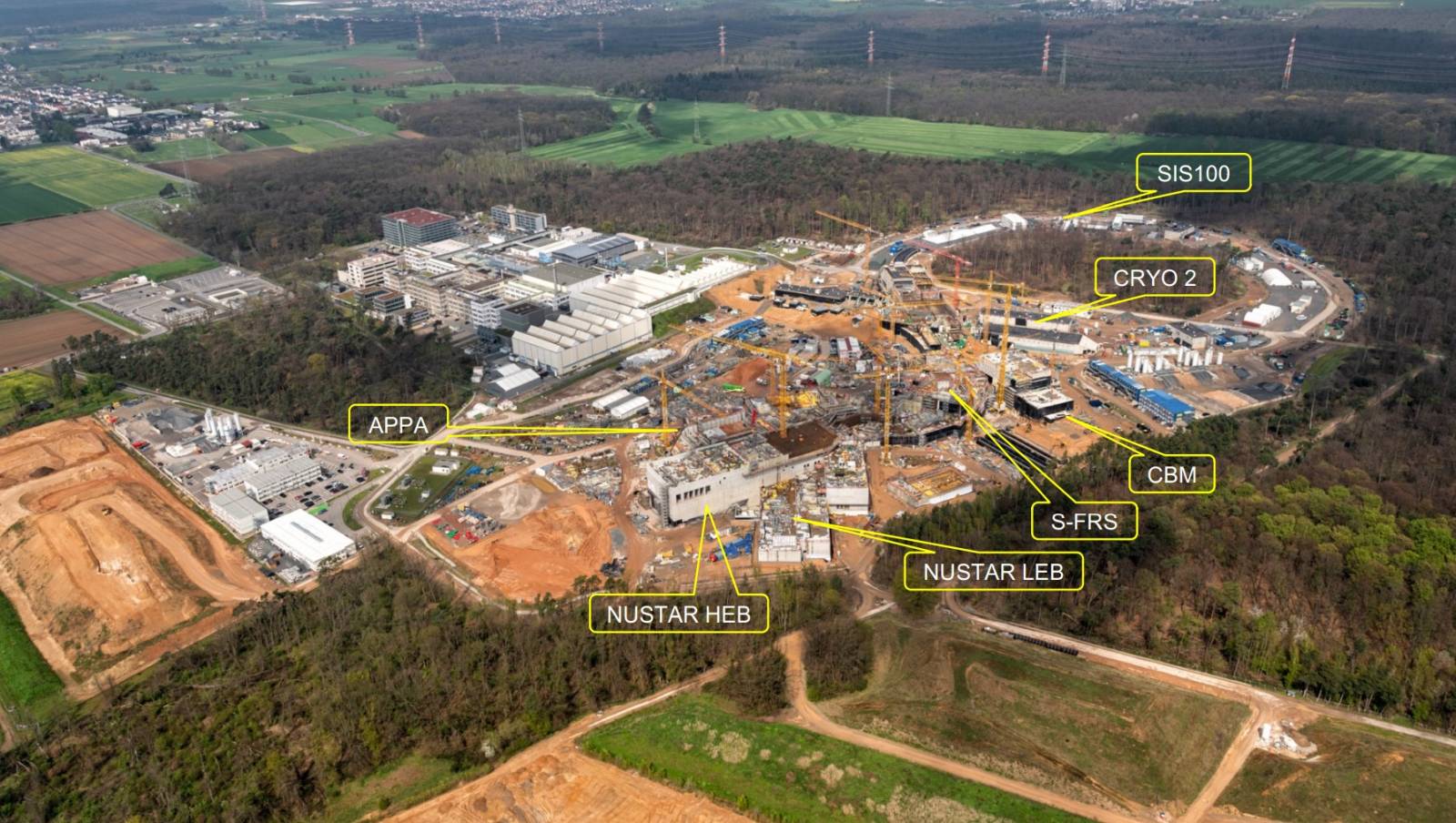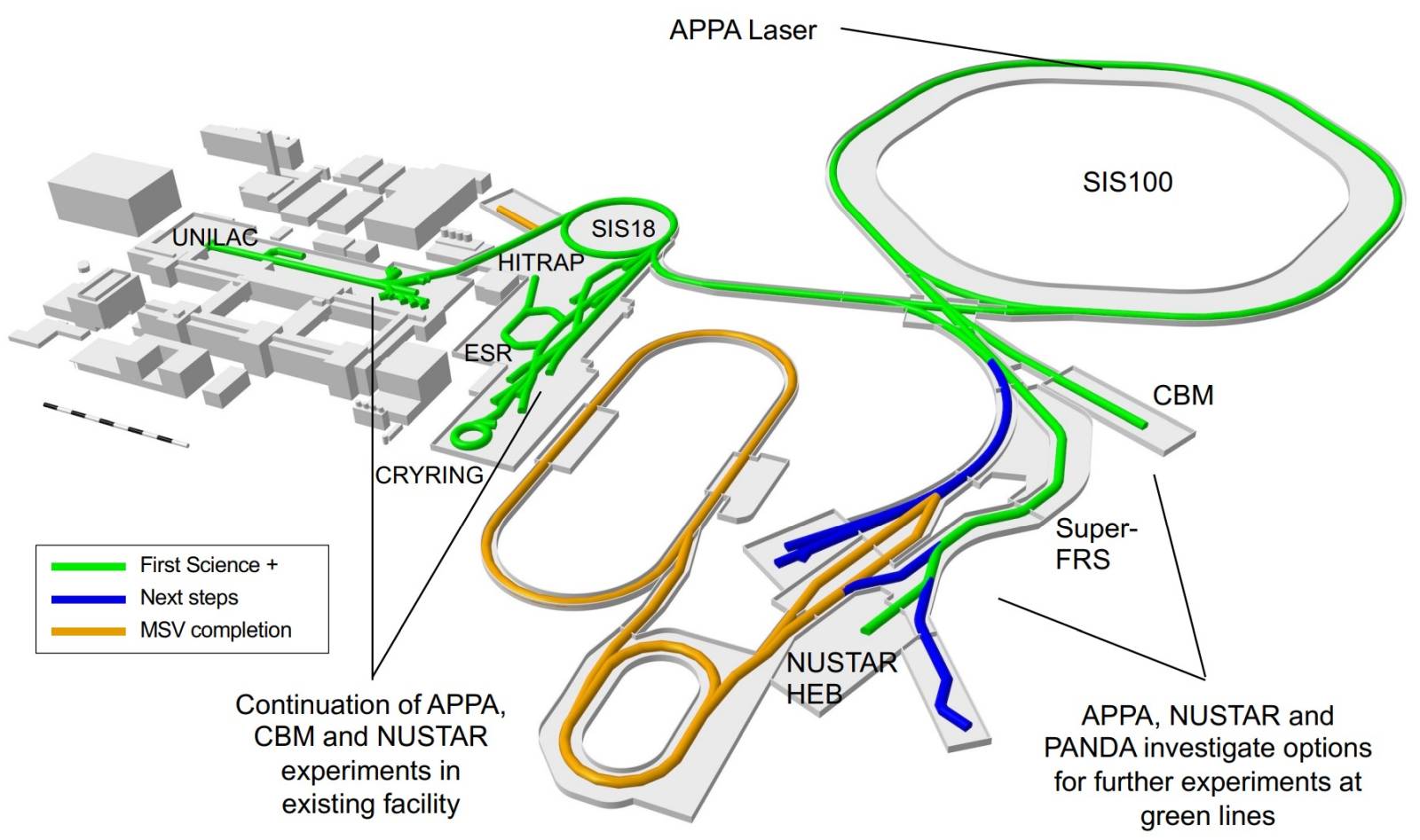
About the project
The Facility for Antiproton and Ion Research (FAIR) GmbH is a newly constructed European large research infrastructure included in the ESFRI Roadmap. FAIR is of European interest and impact, built at the German national laboratory at GSI Darmstadt.
You can follow the construction progress of FAIR here.
It covers activities in four scientific pillars: Compressed Baryonic Matter (CBM and HADES); antiProton ANnihilation at DArmstadt (PANDA); Nuclear STructure, Astrophysics and Reactions (NuSTAR) and Atomic, Plasma Physics and Applications (APPA).
The FAIR laboratory, the core of which is the SIS100 heavy ion accelerator, will be unique in par-ticular due to the production of very intense beams of relativistic heavy ions, which will enable the study of very rare reactions leading to the subthreshold emission of so-called charm particles in nuclei-to-nuclei collisions (CBM pillar) and thus make a substantial contribution to verify the nuclear-physics model of gravitational wave-generating neutron star fusion, for the discovery of which the Nobel Prize in Physics was awarded in 2017. Furthermore, these very intense beams from SIS100 will enable the production of intense beams of radioactive nuclei (NuSTAR pillar) and thus the study of leading reactions in the laboratory to the production of elements inside stars, the so-called nucleogenesis. It will be also possible to produce unique bundles of antiprotons in accumulation rings (PANDA pillar), which will enable the study of exotic, otherwise hard-to-reach particles, so-called glueballs or tetraquarks. For future fusion reactors, the study of the conditions for the creation of highly compressed plasma and the subsequent fusion reaction (APPA pillar), requiring very intense beams of heavy ions, which will be provided by the SIS100 accelerator, is of fundamental importance. FAIR will also be a test site for the European Space Agency (ESA) to study the effects of cosmic radiation on astronauts during the upcoming mission to Mars (APPA pillar).







